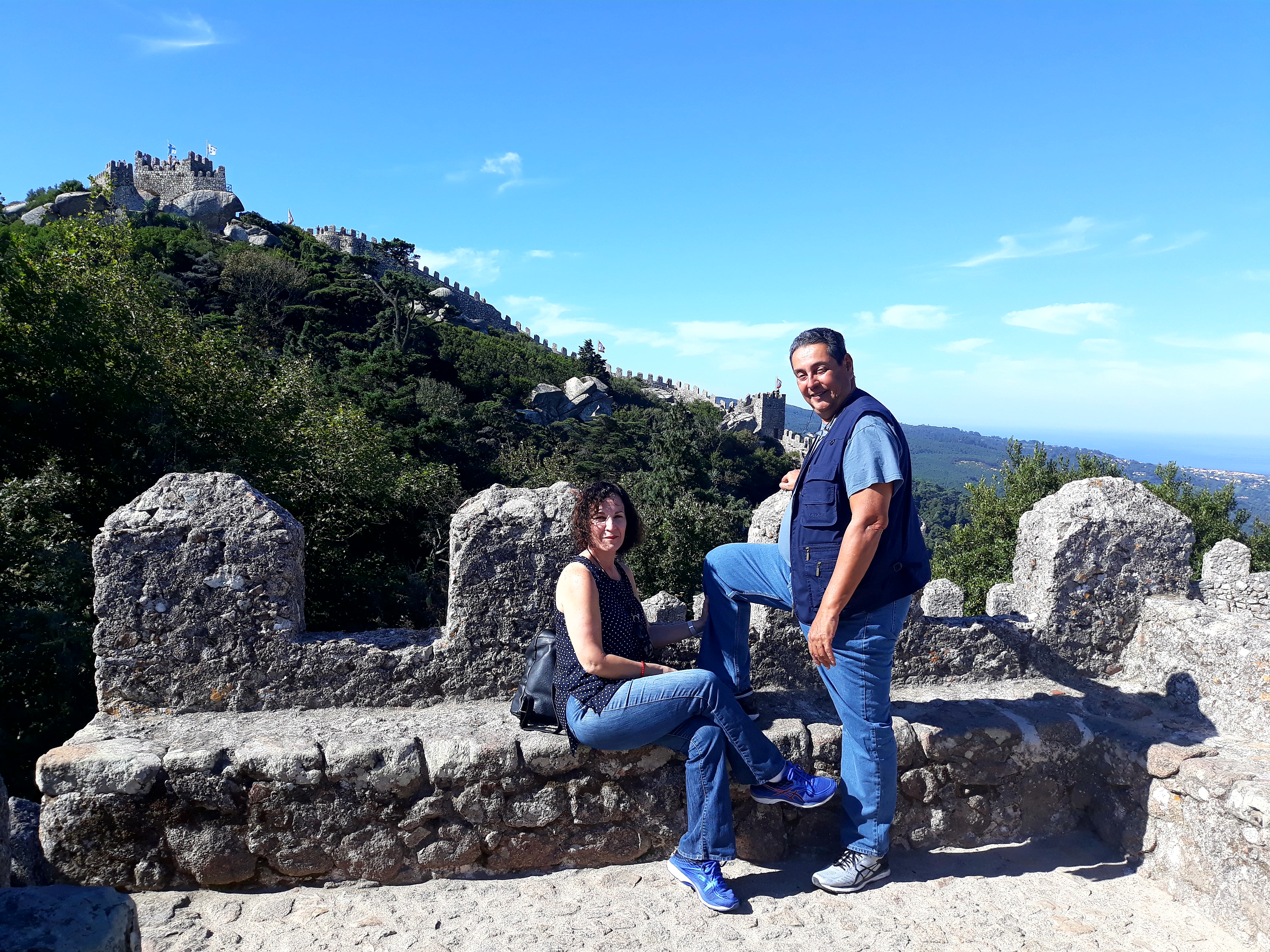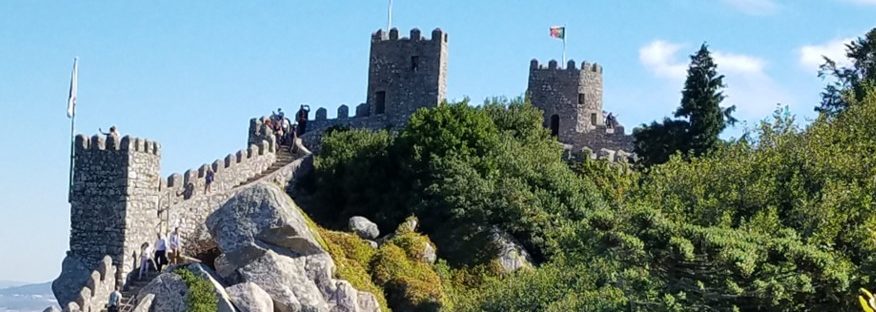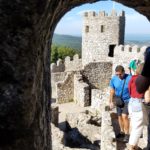 The “Castelo dos Mouros” or Castle of the Moors was an experience when visiting Sintra, Portugal. Although some assume the challenge of climbing on foot, we preferred to ride the bus that took us straight to the castle. Why? The Castle of the Moors rises on one of the summits of the mountain range, specifically in the parish of São Pedro de Penaferrim in the village of Sintra, Portugal.
The “Castelo dos Mouros” or Castle of the Moors was an experience when visiting Sintra, Portugal. Although some assume the challenge of climbing on foot, we preferred to ride the bus that took us straight to the castle. Why? The Castle of the Moors rises on one of the summits of the mountain range, specifically in the parish of São Pedro de Penaferrim in the village of Sintra, Portugal.
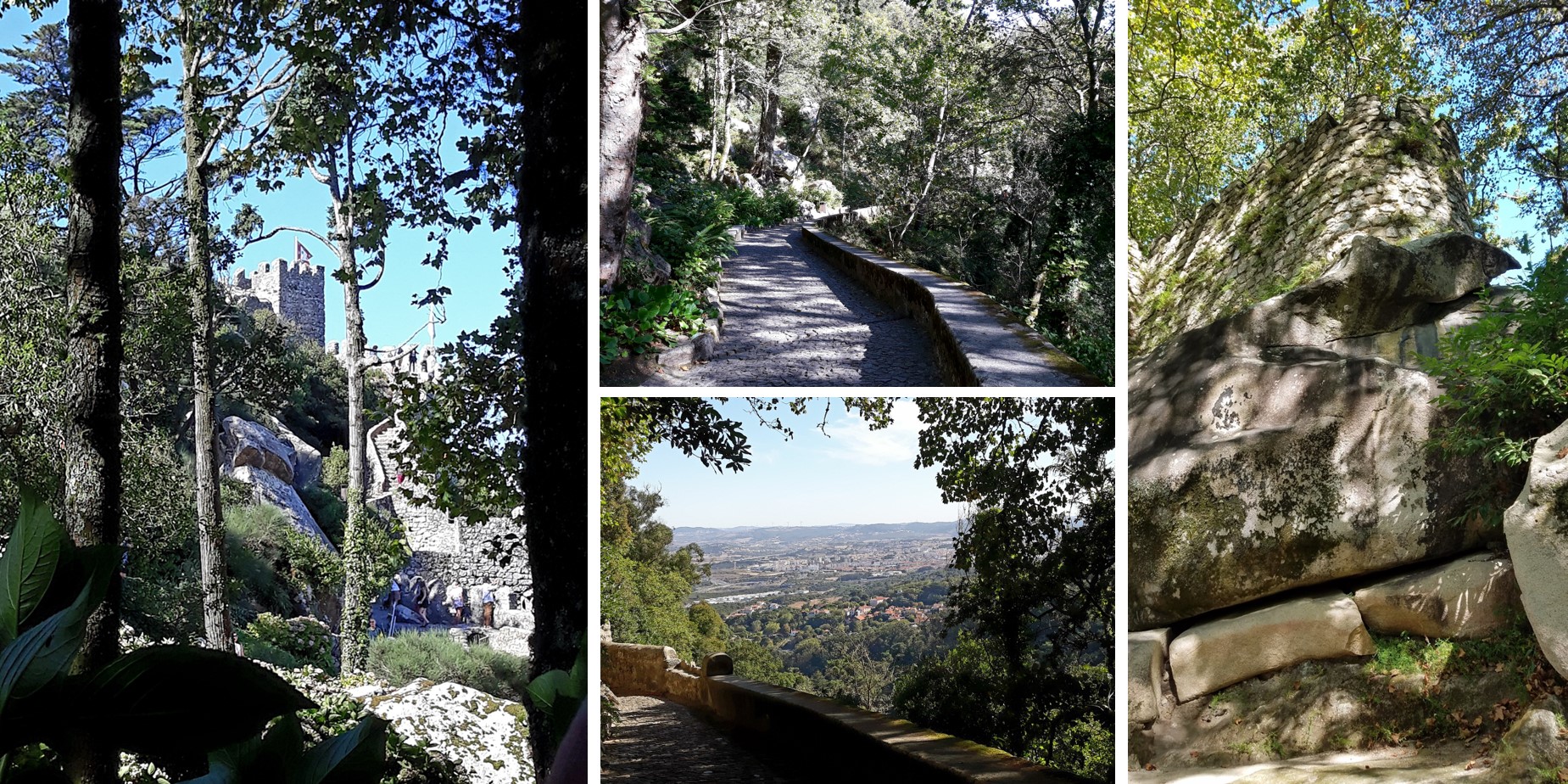
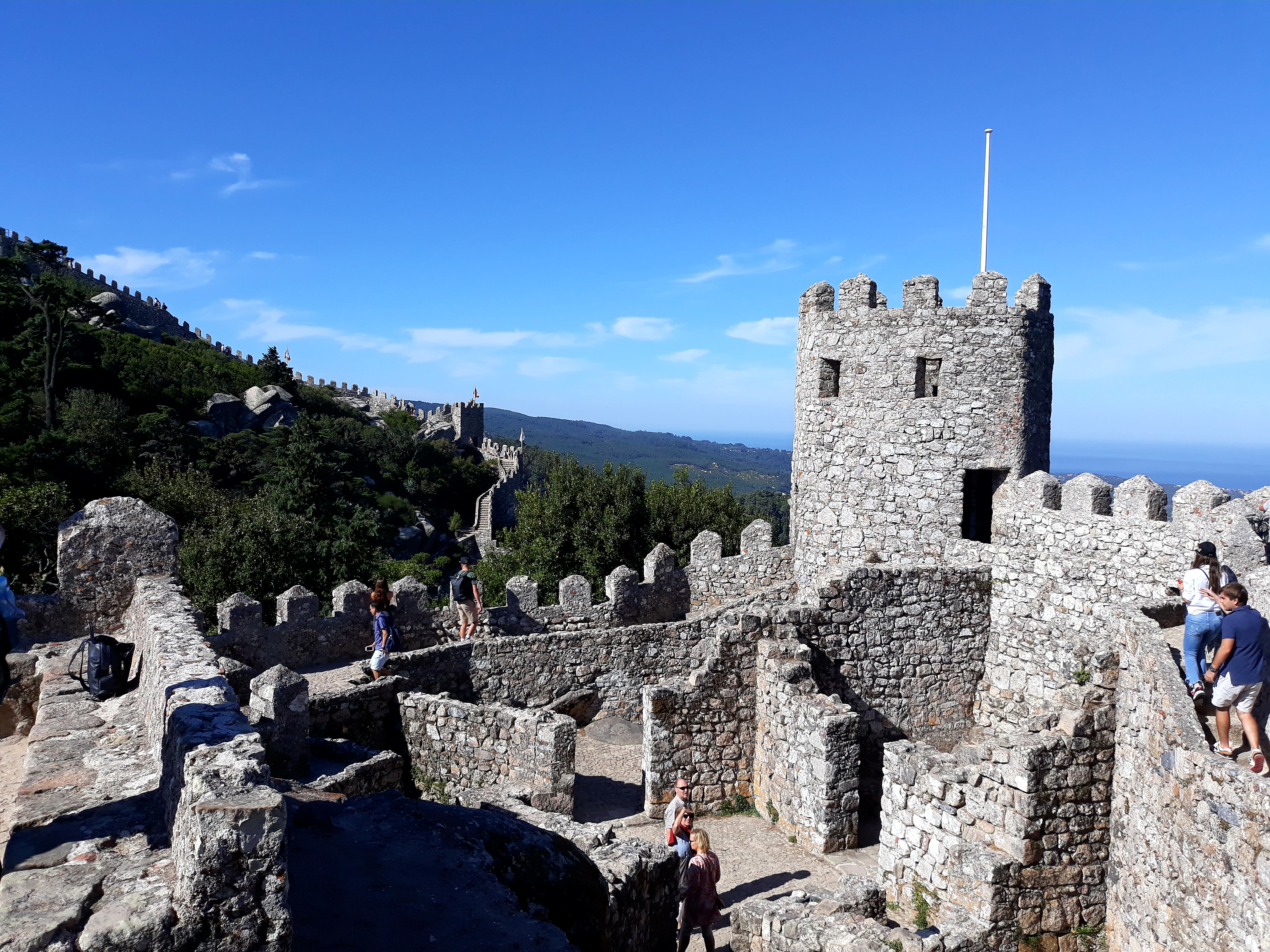
This fortification was built between the 8th and 9th century in order to control the land routes that connected the Atlantic Ocean with Lisbon. As its name suggests, it was built by the Moors during their invasion of the Iberian Peninsula. The control over this Castle changed hands on many occasions during the wars of reconquest of the Iberian Peninsula. For example, it was in the hands of King “Alfonso VI of León and Castilla” for a short time, then returned to Muslim hands in 1095. Finally, in 1147, is rescued by Don “Afonso Henriques”.
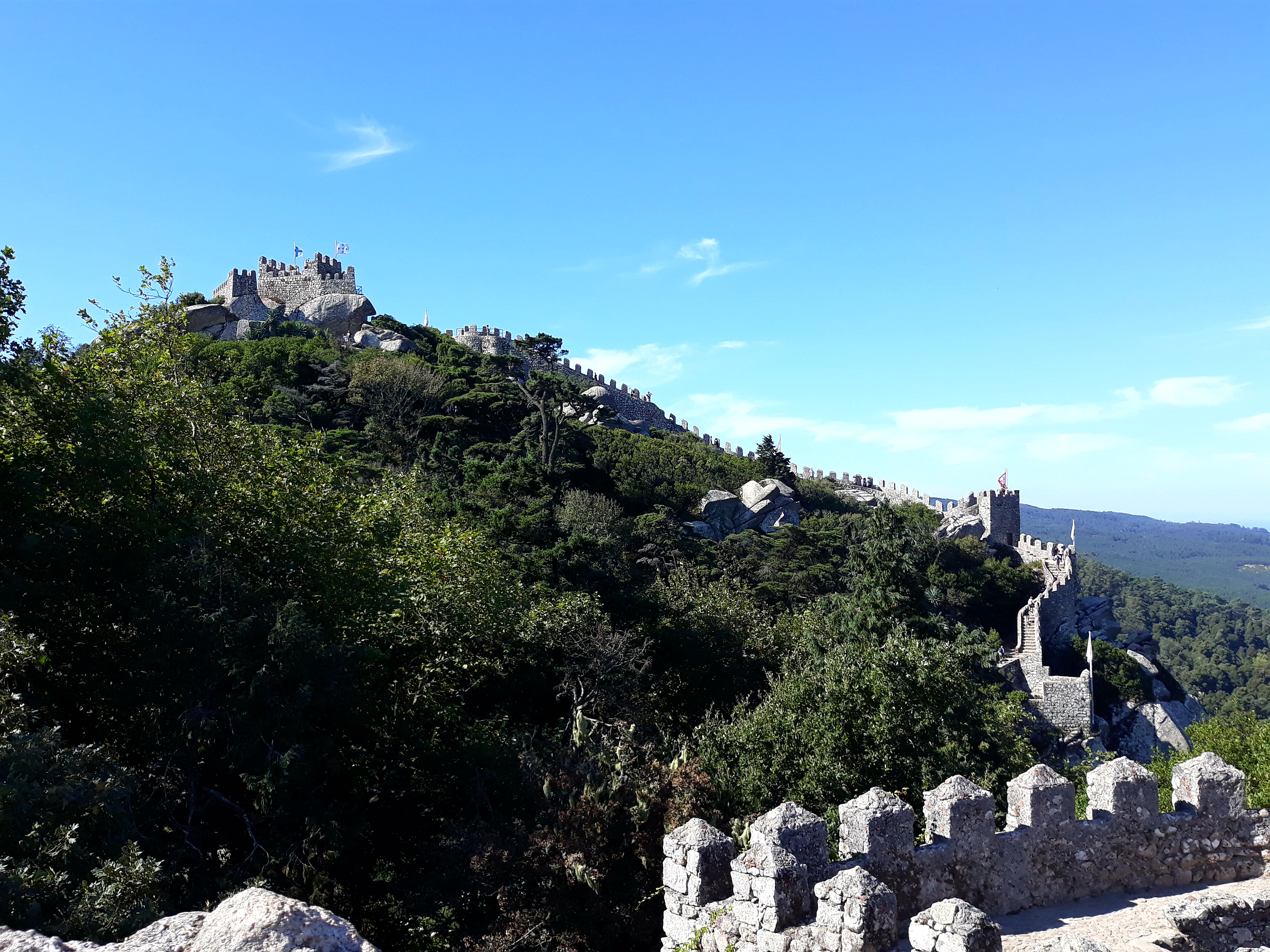
Since the mid-nineteenth century, reconstruction and maintenance work has been carried out on the Castle of the Moors. It is under the reign of Maria II and her husband Fernando II between the years 1834 – 1853 that the first reconstruction works were carried out. Precisely they, are given the task of turning the Castle into a tourist attraction, conditioning lookouts and access roads. In 1910 it is declared a National Monument. Parts of the walls are reconstructed in 1939. From that moment on, minor maintenance and reconstruction works were carried out in 1954, 1965, 1986 and 1992.

In 1995 it is declared together with other castles and palaces in Sintra as a World Heritage Site by UNESCO.
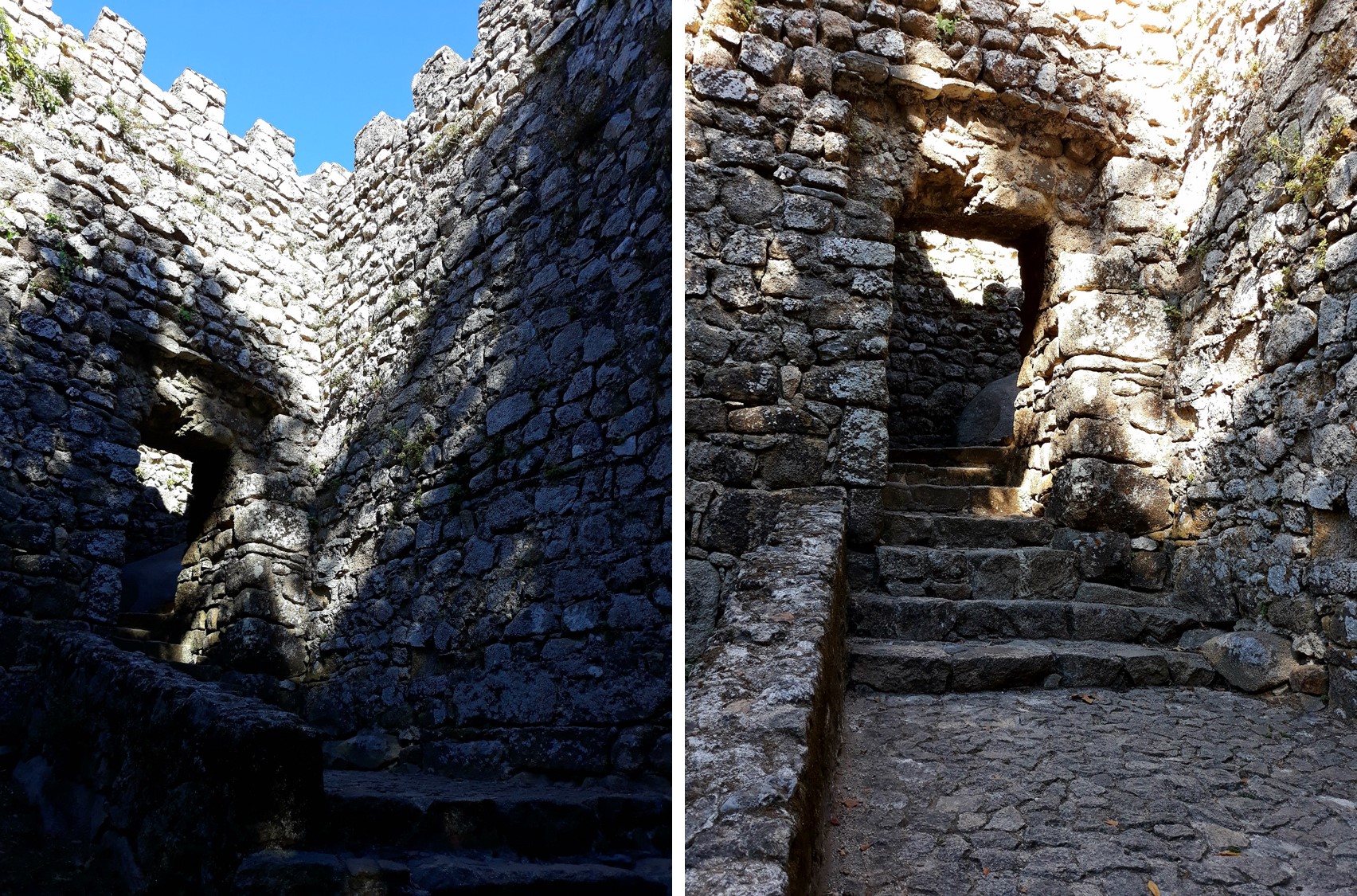
The walls are built in double chain, that is, they consist of an exterior and an interior wall. It has five (5) towers; (4) four rectangular and one (1) of circular floor crowned by pyramidal bases. The Royal Tower is located in the highest part of the complex and to reach it you have to climb a staircase of 500 steps. A challenge consisting of climbing along the edge of the wall that can beat even the strongest of men.
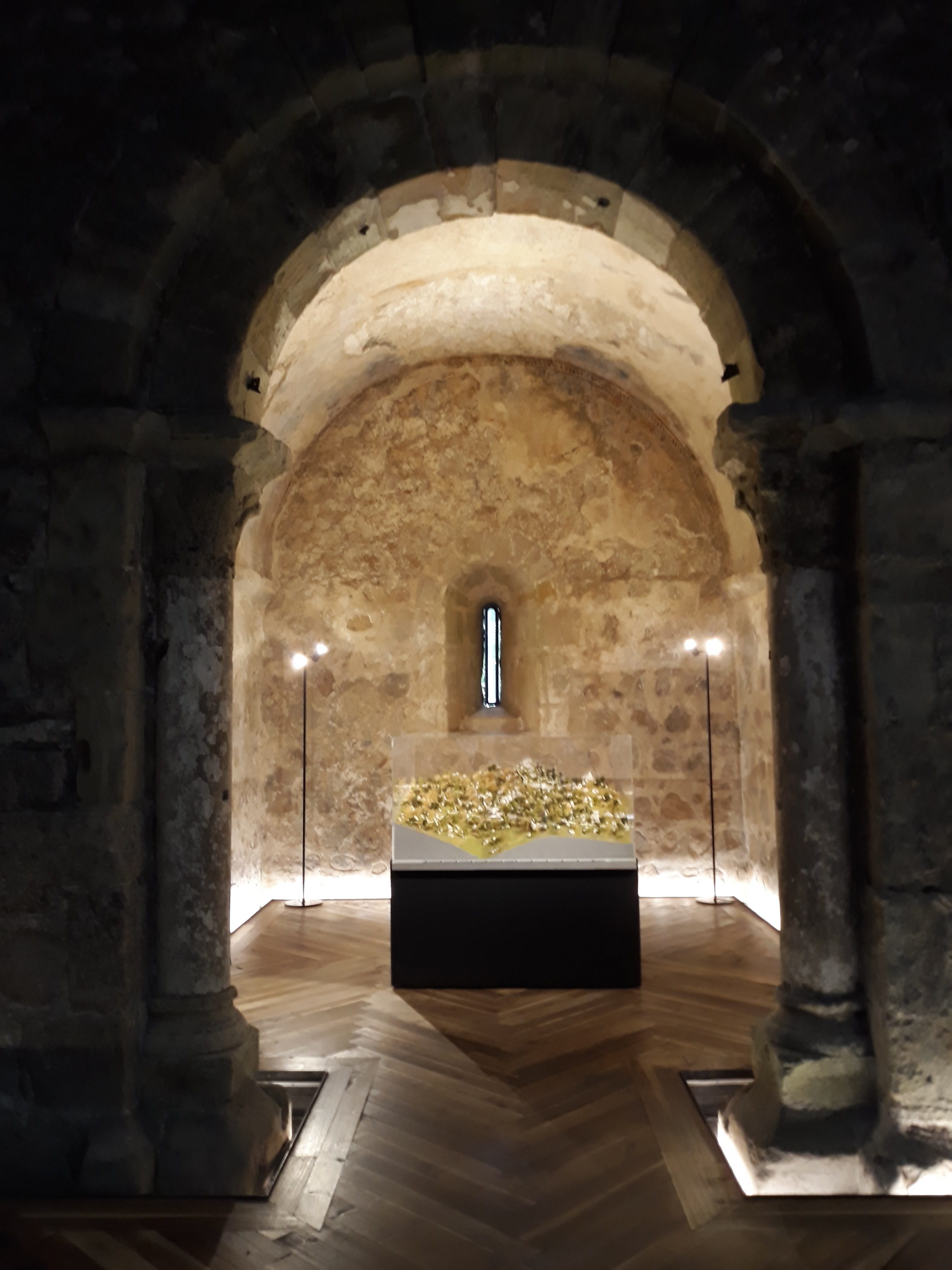
The Castle has its own chapel consecrated to San Pedro that was built during the time of Don “Afonso Henriques”. Next to the church is a large cistern dating from the Moravian invasion and nourished by a spring that also provided water to the National Palace of Sintra.

